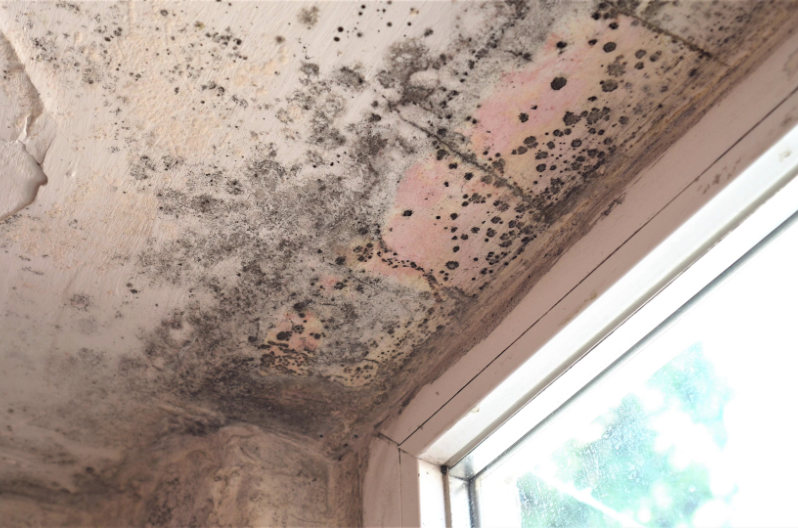Mold is a natural fungus that will grow on any organic substance. The ideal conditions include a consistent source of moisture, the right humidity, and a moderate temperature. If you have mold, it will actually eat away at your home and can lead to major structural damage. Exposure to mold can also cause certain health conditions, including runny nose, throat irritation, respiratory conditions, and asthma attacks. From how does mold grow to where you can find it, here are the basics of mold growth.
How Does Mold Grow?
Mold grows in colonies on any organic material with the right moisture level, temperature, and humidity. Mold spores exist naturally in the air and spread like seeds. With the right conditions, mold can grow on almost anything in your home.
If you get mold, the colonies will spread to other nearby areas. Most molds form fuzzy, thread-like structures on the surface but will also grow deep inside organic materials. It is extremely resilient and often hard to kill mold once it appears.
In your home, mold will most commonly grow on porous surfaces like walls, ceilings, cabinets, and carpeting. If you do not address the issue, it can lead to structural damage. Other mold issues include odors and certain health risks.
What Does Mold Need To Grow?
Mold only needs a few things to grow, and the perfect environment includes moisture and a food source. However, humidity, temperature, and light levels also affect mold growth.
- Moisture Source – The key to mold growth is a persistent moisture source. From condensation to water leaks, even minor water sources can lead to mold issues.
- Food Source – Mold will eat any organic matter and is most common on porous materials like walls, carpeting, and cabinets. Other common food sources include cardboard boxes, wood, paper products, fabric, and insulation. However, it can grow on most building materials.
- Humidity Level – Although it can grow at many levels, indoor molds prefer a relative humidity of 55% and above. However, indoor humidity can dip as low as 20% if other conditions are right.
- Temperature – The temperature range for mold growth ranges from 60 to 80 degrees Fahrenheit. However, certain molds can grow at higher or lower temperatures.
- Low Light Levels – Most types of mold prefer lower light levels, but it can grow in almost any indoor environment. Most basements, bathrooms, and kitchens provide the optimal amount of light for mold to thrive.
Where Does Mold Grow?
Unfortunately, indoor mold growth is extremely common. Most mold infestations are in the basement, bathroom, or kitchen, but it can grow almost anywhere with the right conditions. Moisture, condensation, and humidity can lead to mold in:
- Basements
- Bathrooms
- Crawl Spaces
- Kitchens
- Laundry Rooms and Washing Machines
- Walls and Wall Cavities
Frequently Asked Questions About Mold Groth
How Long Does It Take for Mold To Grow?
Under the right conditions, mold will grow in 24-48 hours. However, it can appear in as little as 12 hours after a sewage backup, contaminated water flooding, or if you have mold in your home already.
What Humidity Does Mold Grow?
Most common above 55%, Mold grows at a range of humidity levels. It can grow as low as 20% humidity depending on moisture level and temperate.
What Are the Effects of Mold Exposure?
Mold poses several health risks. The most common signs of mold exposure are similar to allergic reactions and include a stuffy nose, sore throat, cough, or eye irritation. Although less common, skin irritation is possible. However, it can also lead to shortness of breath. People with asthma, respiratory diseases, or weakened immune systems can have more severe reactions. Also, prolonged exposure can lead to several health issues.
What Kinds of Mold Are Most Dangerous?
So-called toxic molds get a lot of attention, but all molds pose certain health concerns. Black mold is just as dangerous as any other type of mold. In fact, the only way to tell them apart is with expensive mold testing. Unless you specifically need to know the mold for insurance purposes, it’s best to put that money toward mold removal.
What Are the Signs of Mold Growth?
Common signs of mold growth include fuzzy mold colonies, dark spots or patches, and musty odors. Even if you can’t see mold, other signs of a problem include excess water, wet conditions, high humidity, condensation, and excessive moisture.
How Do You Prevent Mold?
The best way to prevent mold is to use exhaust fans in the kitchen and bath, limit excess moisture, repair water leaks, and regulate your humidity levels.
Does mold keep coming back when you clean with bleach? Are you worried about mold spores or your indoor air quality? Our local mold remediation specialists can inspect your home, test for mold, and remove any mold problems safely and quickly. Call 1-888-681-1071 now for a free quote and reliable mold cleanup.





